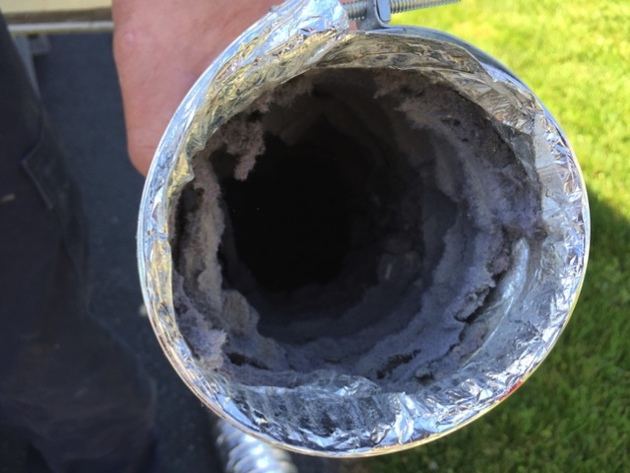Dryer Lint
Yes, dryer lint can be dangerous if not properly managed. While it may seem harmless, lint from your clothes dryer can pose several risks, including:
- Fire Hazard: Dryer lint is highly flammable. It consists of fine, highly combustible fibers that can easily ignite if exposed to high temperatures or an open flame. When lint accumulates in your dryer’s vent and exhaust ducts, it can restrict airflow and cause the appliance to overheat. This overheating, combined with the presence of lint, can lead to dryer fires, which are more common than you might think.
- Reduced Efficiency: Lint buildup in the dryer vent and exhaust ducts can obstruct the flow of hot air, making the drying process less efficient. This leads to longer drying times, increased energy consumption, and higher utility bills. Over time, your dryer’s heating element can also be damaged due to excessive heat buildup caused by restricted airflow.
- Carbon Monoxide Risk: If your dryer is connected to a gas line, lint buildup can create a carbon monoxide hazard. When the exhaust is obstructed, carbon monoxide, a colorless, odorless gas, may be released back into your home instead of being safely vented outside. This poses a severe health risk.
- Mold and Mildew: Lint can also trap moisture, creating an environment for mold and mildew to thrive. This can lead to unpleasant odors and even health issues if mold spores are released into the air.

To mitigate the dangers associated with dryer lint, follow these precautions:
- Regularly Clean the Lint Filter: After every load of laundry, clean the lint filter or screen. This simple step will not only improve the dryer’s efficiency but also reduce the fire risk.
- Inspect and Clean the Vent and Exhaust Ducts: Regularly check the vent and exhaust ducts connected to your dryer for lint buildup. If you notice an accumulation of lint, it’s essential to clean these areas. Depending on the length and complexity of your duct system, you may want to consider professional cleaning services.
- Check the Outside Vent: Ensure that the outdoor vent is not obstructed by debris, birds’ nests, or other materials. A blocked vent can restrict the flow of air and increase the risk of lint buildup.
- Install a Carbon Monoxide Detector: If you have a gas dryer, consider installing a carbon monoxide detector in your laundry area to alert you if dangerous levels of carbon monoxide are present.
- Follow Manufacturer’s Recommendations: Always follow the manufacturer’s recommendations for your specific dryer model regarding maintenance and safety guidelines.
- Use a Vent Booster Fan: In cases where your dryer is located far from an exterior wall, a vent booster fan can help improve airflow and reduce the risk of lint buildup.

By taking these precautions and being vigilant about lint management, you can significantly reduce the potential dangers associated with dryer lint. Regular maintenance and cleaning are essential to ensure the safe and efficient operation of your dryer while protecting your home and family from fire hazards and other risks.

